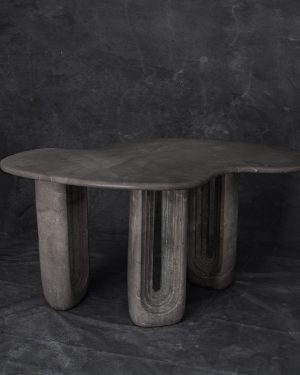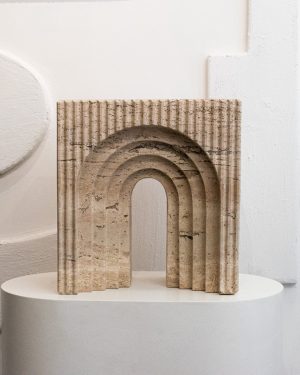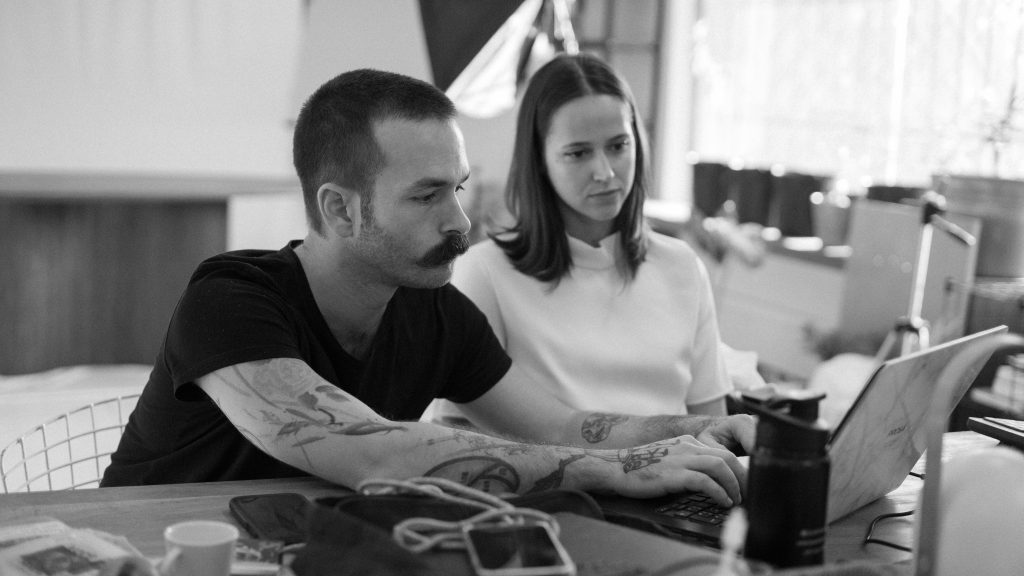

10 Projects Striving to Keep Indigenous Crafts Traditions Alive
In a world of mass production, there’s a unique beauty in handcrafted designs drawing references, or made in collaboration with indigenous communities. These pieces aren’t just products; they’re stories of traditions, communities, and a bond with nature that’s been forged over generations.
As Indigenous Peoples Day approaches, we’re spotlighting this rich world of design, inspired by Adorno’s latest “Indigenous Design” collection. This article takes you on a journey from the Andean mountains with Las Manuelas to Brazil’s vibrant heart with Yankatu, exploring Mexico’s deep-rooted culture with Angela Damman, and touching upon Pakistan’s blend of heritage with Studio LEL.
Beyond the beauty of these initiatives, you’ll discover the importance of supporting local artisans facing challenges from globalization. You’ll see the growing trend of rustic and organic styles in modern homes and understand the value of choosing designs that have a socially responsible impact.
So, if you’re curious about design, and tradition, or just want to learn more about the craftsmanship behind unique pieces, this article is for you. Let’s celebrate Indigenous Peoples Day and the world of Indigenous Design together.
1. Las Manuelas: Interweaving Traditions and Global Artistry
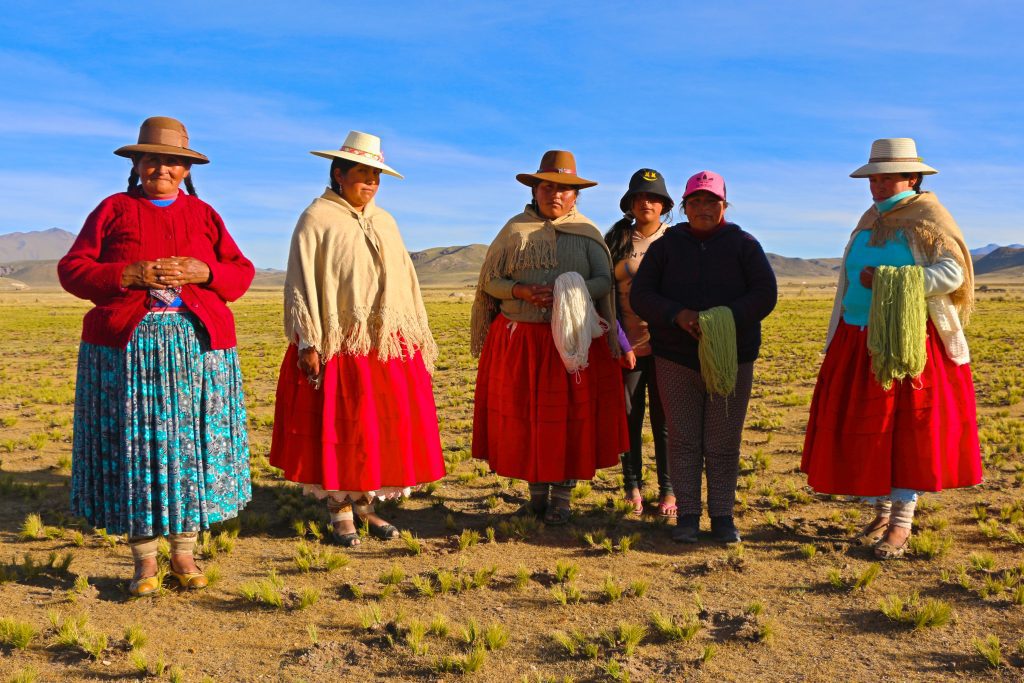

Set against the pristine backdrop of the Andean region in southern Peru, Las Manuelas is not just a group of artisans—it’s a pulsating heart of creativity and collaboration. Located at elevations where the air is pure and the landscapes inspire, the Las Manuelas artisans raise alpacas and cherish their luxurious wool.






Every textile they create is a labor of love—a harmonious blend of nature’s bounty and human craftsmanship. The art of knitting, spinning, and dyeing passed down through generations, meets contemporary interpretations when Las Manuelas collaborates with global artists. Their recent Art Series, where they collaborated with 11 international street artists, exemplifies this harmonious blend of tradition and modernity, transcending boundaries and uniting global creative spirits.
2. Fango Studio: Rekindling Local Essence in Design


Francisco Jaramillo’s journey from the picturesque landscapes of Medellín to the design hubs of Barcelona and back encapsulates the spirit of Fango Studio. It’s an essence that draws from the locals, respects the nuances of indigenous techniques, and amalgamates them with global design sensibilities.






Jaramillo’s passion for local materials is palpable in his creations. The Ibuju collection is a testament to this passion—a symphony of native wood and the renewable “Yaré” fiber, earning him accolades on international platforms. By weaving the spirit of Medellín into every design, Fango Studio underscores the significance of local roots in the global design landscape.
3. Jorge Diego Etienne: Alabaster Narratives of Craft and Culture


In Northern Mexico, nestled in Galeana, Nuevo León, lies the heart of alabaster craftsmanship. Jorge Diego Etienne’s Galeana Collection pays tribute to this very essence. Every carved vase is a dialogue between ancient techniques and modern design, reflecting both the artist’s vision and the craftsman’s mastery.






The collaboration delves deep, allowing the craftsman’s hand to sculpt stories and the artist’s imagination to redefine forms. The result? Objects that transcend their materiality to become functional sculptures, recontextualizing everyday utilities into design masterpieces. Galeana becomes a conduit, linking the raw brilliance of natural alabaster with the intricacies of design.
4. A Tribute to an ancient Brazilian sport: 56 Petecas Chair by Cultivado em Casa


Brazil—a land of vibrant cultures, rich traditions, and a history that’s deeply interwoven with its indigenous roots. The 56 Petecas Chair is a manifestation of this very essence. Deriving inspiration from peteca, a native sport, and artifact, the chair becomes a canvas of history, craft, and design.


It’s not just a seating solution but a narrative—of Brazil’s indigenous tribes, their innovations, and their contribution to the world of design. Each strand and feather is a silent ode to the artisans who’ve kept this hand-feather-ball tradition alive, making the chair not just a functional piece but a slice of Brazilian history.






5. Yankatu: Bridging the Past and Present with Design
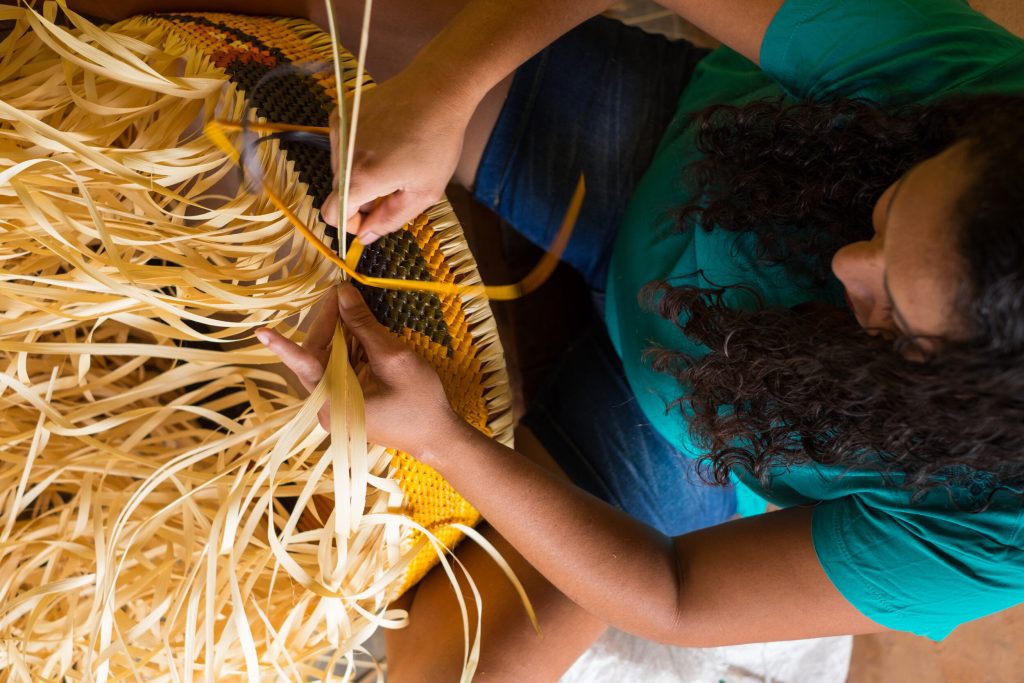

Yankatu’s designs resonate with Brazil’s indigenous soul. Their creations are more than mere objects; they’re a celebration of traditions, a nod to the past, and a vision of the future. Each piece echoes the rich tapestry of Brazilian cultural narratives, ensuring that history is not just remembered but relived.
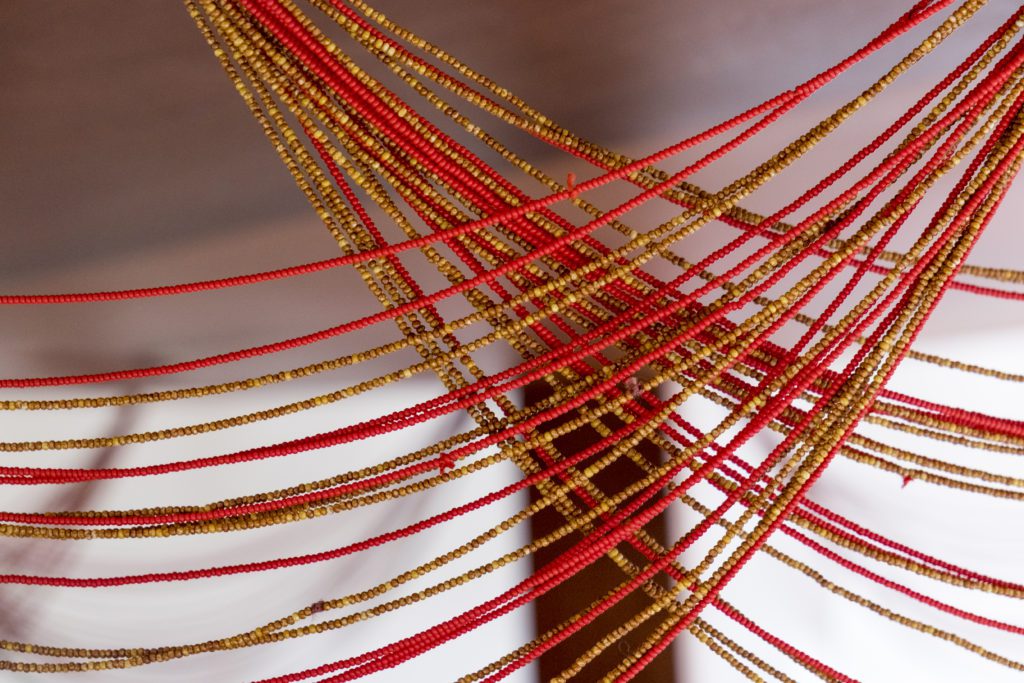



The Beiju tribute, for instance, beautifully encapsulates the essence of Mehinako traditions. The meticulously crafted table, with its solid cabreuva and intricate beadwork, stands as a testament to the deep respect Yankatu has for indigenous crafts. It’s not just a piece of furniture—it’s a story, a tribute, and a bridge between the old and new.
6. Angela Damman: Weaving Yucatán’s Tales with Fibers
Yucatán is not just a geographical entity. It’s a symphony of nature, tradition, and craft. Angela Damman’s designs encapsulate this very spirit. Her journey with native plant fibers paints a vivid picture of Yucatán’s rich textile tradition.






Each creation, be it the ethereal “Kau” Chair or a delicate textile piece, reflects the marriage of traditional techniques with modern aesthetics. By reviving age-old practices and integrating them with contemporary designs, Damman ensures that Yucatán’s craft legacy continues to inspire and thrive.
7. Ayres: Crafting Narratives of Divine Connections


Ayres is more than a design studio; it’s an exploration of ancient narratives and modern expressions. Delving deep into the mystical tales of the Amazons, Ayres crafts objects that resonate with spirituality, belief, and cultural richness. The inspiration is drawn from the Amazonian belief in the divine and the afterlife—ensuring that every object, every design, tells a story.
The Amazonas collection is a celebration of this very ethos. Serving as an altar, a bridge between the mortals and gods, this collection showcases the deep reverence of the Amazons for the divine. Ayres captures this spirit, transforming it into designs that narrate tales of valiance, spirituality, and divine connections.
8. TALLER MAYA: Illuminating Spaces with Mayan Heritage


The cenote—a sacred, natural pit or sinkhole in the Yucatán Peninsula—is a gateway to the Mayan underworld. TALLER MAYA’s Cenote lamp collection draws inspiration from this very symbol of Mayan heritage. Every lamp, meticulously crafted, is not just a source of light but a reflection of Mayan stories, beliefs, and artistry.
Incorporating ancient hammock weaving techniques, these lamps cast shadows and beams that mimic the serene yet mysterious aura of a cenote. It’s a design exploration that melds Mayan legacy with contemporary aesthetics—bringing the enchanting world of cenotes to modern homes.
9. IRTHI x Studio LEL: Crafting Dialogues between Tradition and Modernity


The collaboration between Irthi Crafts Council and Studio LEL is emblematic of design’s transformative power. Their Thaya Collection, showcased at the Milan Design Week, encapsulates the essence of artisanship, innovation, and storytelling. Designed by Meherunnisa Asad, the vases are a confluence of firm safeefah fibers and robust stones—a testament to the craftsmanship of displaced Afghan master artisans and Pakistani craftsmen.






Every vase, with its punctured design and intricate weave, narrates tales of the artisans’ journeys, their crafts, and their indomitable spirit. The collection becomes a medium, fostering a dialogue between fine art, design, and indigenous craft.
10. LØRDAG & SØNDAG:


Lørdag & Søndag, founded in 2011 by Salvador and Enzo Compañ, stands as a beacon of indigenous, local, and artisanal design in Mexico City. Embracing Mexico’s profound cultural heritage, the studio delves into the depths of traditional craftsmanship, cultivating a collection of remarkable pieces known as “Artefactos.” Their creative process, influenced by the rich tapestry of Mexican culture spanning from ancient civilizations to contemporary art, epitomizes a harmonious blend of past and present. Yet, beyond mere aesthetics, Lørdag & Søndag’s ethos extends to profound collaboration with artisans hailing from diverse Mexican communities, often indigenous.






This commitment isn’t merely about design; it’s about honoring the legacy of these artisans and ensuring their cultural integrity is upheld. Recognizing the importance of cultural context and working conditions, the studio operates with a deep sense of respect for the artisans’ way of life. Through this symbiotic relationship, Lørdag & Søndag not only produces exquisite pieces but also fosters a sustainable and culturally sensitive approach to design.












Keeping the Legacy Alive: The Power of Craftsmanship and Knowledge
Throughout history, crafts and indigenous designs have been more than just aesthetic expressions. They have been reservoirs of knowledge, repositories of culture, and symbols of community unity. By preserving and promoting these crafts, we’re not just sustaining a tradition but also ensuring the transmission of invaluable know-how across generations. This knowledge, deeply rooted in the nuances of local materials, techniques, and environment, offers insights that modern machinery or technology cannot replicate.




Combatting Globalization: Supporting Indigenous Crafts Communities
The tides of globalization, while bringing many advantages, have also threatened the existence of local crafts communities. The ubiquity of mass-produced goods has often overshadowed the unique, handcrafted products of indigenous artisans. By supporting these communities, we’re not only preserving the rich tapestry of global craftsmanship but also promoting economic sustainability. Each purchase, each endorsement, acts as a bulwark against the erasure of these unique crafts in the face of global commercial giants.


Embracing the Indigenous Design in Modern Homes
There’s a nostalgic charm in the rustic, an organic allure in the boho chic, and a tranquil touch in biophilia. As the world becomes increasingly urbanized, there’s a growing longing for designs and styles that reconnect us to nature and simpler times. The resurgence of styles like rustic, boho chic, and organic design in modern homes is akin to a call from heaven, beckoning us back to our roots. It’s a celebration of texture, color, and natural elements— a subtle reminder of the beauty that lies in simplicity and authenticity. A great example of this is the home of writer John Newton & his husband Marc Perrotta in Mérida, Mexico.




The Era of Socially Responsible Design
Design plays a pivotal role in a world striving for inclusivity, diversity, and social responsibility. The emphasis on ‘woman-made’, and ‘artisan-made’ products not only fosters economic empowerment but also promotes diversity and inclusivity. It’s a reflection of a society that values every individual’s contribution, irrespective of their background, gender, or craft. As consumers become more discerning, factors like ethical sourcing, sustainable production, and cultural preservation become critical. It’s not just about aesthetics anymore; it’s about ethics, values, and social consciousness. In this landscape, competitions and platforms that highlight these values pave the way for a more inclusive and responsible design future.
Indigenous design stands at the crossroads of tradition and modernity. It’s a testament to humanity’s rich heritage and an indicator of the direction in which we’re headed. Embracing it is not just about appreciating art; it’s about understanding our past, shaping our present, and envisioning a sustainable, inclusive future.




















